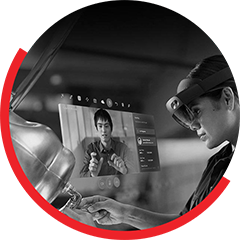Oil & Gas is an extremely wide and resource challenged industry with critical operational challenges. Precious time can be compared to black gold itself; substantial competitive advantage can be achieved by improved efficiency. The Oil & Gas industry having many operational challenges and they manifest themselves through lengthy order to cash cycles, low utilization and revenue per field resource numbers, high bill contestability and difficulties delivering and supporting customer commitments.
Advanced Technology trends in the Oil & Gas Industry emerged due to changing operational procedure and industry challenges. There are several field service challenges arises in main streams like Upstream, Midstream & Downstream. Therefore, the requirement of innovative technology, cost reduction, high performance & time consumption are more important on the bases of problems or challenges identified in various streams of production & operations across the industry life cycle.
Why should Field Service adopt Digital Solutions?
With the increase in production & demand, operational producers are facing critical issues in the entire Oil & Gas industry journey. Out of many challenges, Field Service tasks are getting messy due to the increasing number of technical errors and failure of physical devices. Every field engineers and technicians were assigned with multiple task like asset management, field inspection & spare parts inspection etc.
Field Service solutions are designed for efficient use of bandwidth & computing power also creating minimal network impact. Reporting functionality helps users to focus on repeatedly problematic sites and periodic inspection.
Challenges that Oil & Gas Industry need to address
- Duplicate data entry: Feeding data in multiple systems leads to errors, delays in invoicing, higher costs, customers experience
- Changing business: Continues innovation in Oilfield businesses service
- Need for Speed: Speeding up invoicing & collecting field tickets or use mobility devices to capture offline or online field information
- Staff turnover: Difficulty in sourcing experienced staff. Payroll or expense reimbursements may increase the miscalculation
- Increasing regulation: Payroll changes, taxes & safety precautions Etc. all increase the regulatory burden
- Invoicing problems: Getting field tickets from the field takes time, delaying invoices and impacting electronic invoicing
Benefits of Digitizing Field Services
Field Services faced limited visibility into its offshore field servicing operations and sought to improve utilization and up-time of its equipment. To achieve this the Field Service companies, deploy a mobile, offline-enabled solution that allowed access to service information while offshore. This helps in achieving real-time accounting for time and materials, faster invoicing, as well as custom reporting for quick forecasting which results in 50 percent reduction in forecasting time.
Key Benefits of having a good Digital Field Service Solution
- 10% Increase in productivity by enhancing digital technology
- Technologies could redefine the field service culture
- Reduce overstocking costs; improve parts visibility and workforce utilization; reduce administrative overheads; and increase efficiencies
- Provides a 360-degree view of assets, optimizes asset management, increases remote service efficiency, and reduces operational expenses
- Predicts parts and asset failure and automates diagnostics based on fault codes and past service history
- Provides base visibility and monitoring, including the average time to failure, parts performance, and many more
- The right solutions connect asset performance management (APM) and connected field services (CFS) platforms and integrate into current asset management (and other) systems to provide a holistic and seamlessly integrated platform
Adoption of Innovative Technologies
Digital technologies adoption needs business culture maturity, which requires additional qualities to adopt to changes, several reasons for the delayed adoption of it in the Oil & Gas industry.
The current downturn in the Oil & Gas business has further constrained the industry. The field administrators are looking forward to advanced technologies for help.
“Digital Oilfield” a preferred methodology in Oil & Gas industry has contributed to 13% increase in productivity, this made economic recovery of the oil fields possible.
Digital innovations technologies like Big Data, Cloud Computing, AI, Industrial Internet of Things (IIoT), Industry 4.0, Mobile innovation, Sensor and Automation are going to bring significant changes to the Oil & Gas industry.
Reasons why Oilfield Services company consider Dynamics 365?
Dynamics 365 is not just one solution for one aspect of the business. It is a cloud platform capable of outpacing competitors on multiple fronts, from back office accounting, to managing bids, contracts, work orders, billing and even sales relationships. Built in the Microsoft cloud and alongside Office 365, it delivers on reporting, business intelligence, machine learning, AI and predictive analytics at a scale that other products just cannot compete with.
There is a reason Microsoft Dynamics 365 is the fastest growing technology platform in the oilfield services sector!
A robust ERP like Dynamics 365 for Operations having the capability to capture an enormous volume of data and transaction information. Dynamics 365 having Systems of engagement for sales and field services data collection & even more. Advantage of the sensor, GPS, mobile and partner-fed data streams, can’t be processed manually as per the expected time period through spreadsheets and paper pencil mode. Using Dynamics 365, field service company can provide competitive solution to Oil & Gas industry where every dollar, time, and manpower count. Whether you looking to effectively manage demand supply, inventory, efficiently dispatch technicians and track their activity, streamline invoicing, integrate with field service platforms, or anything in between the Dynamics 365 could be an ideal technology platform for Oil field services sector.






